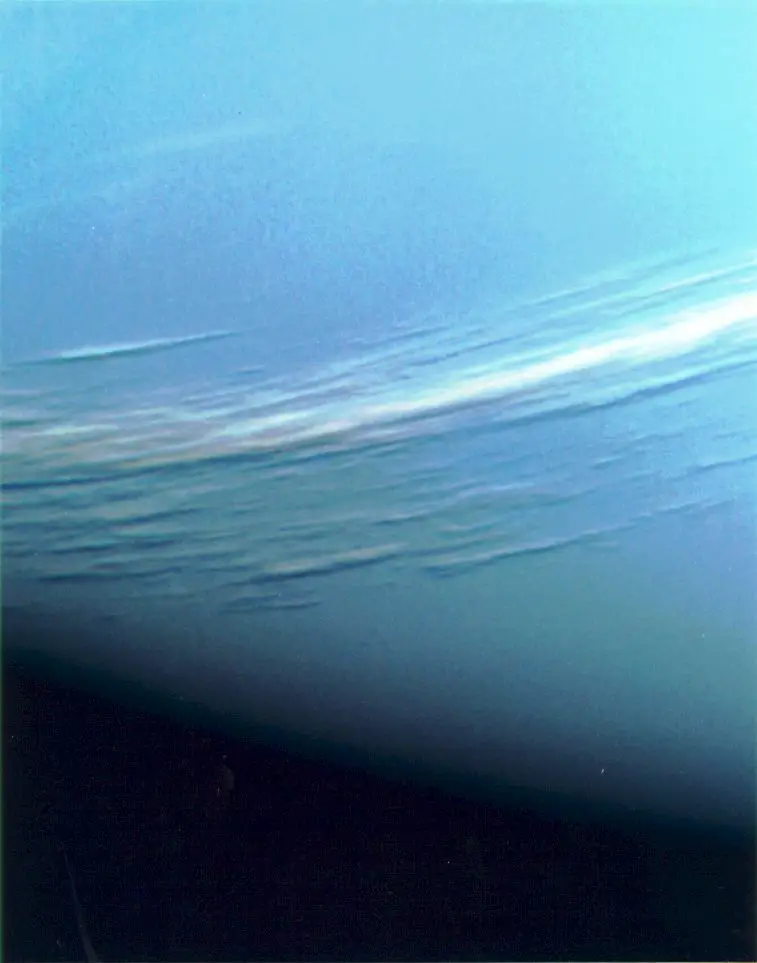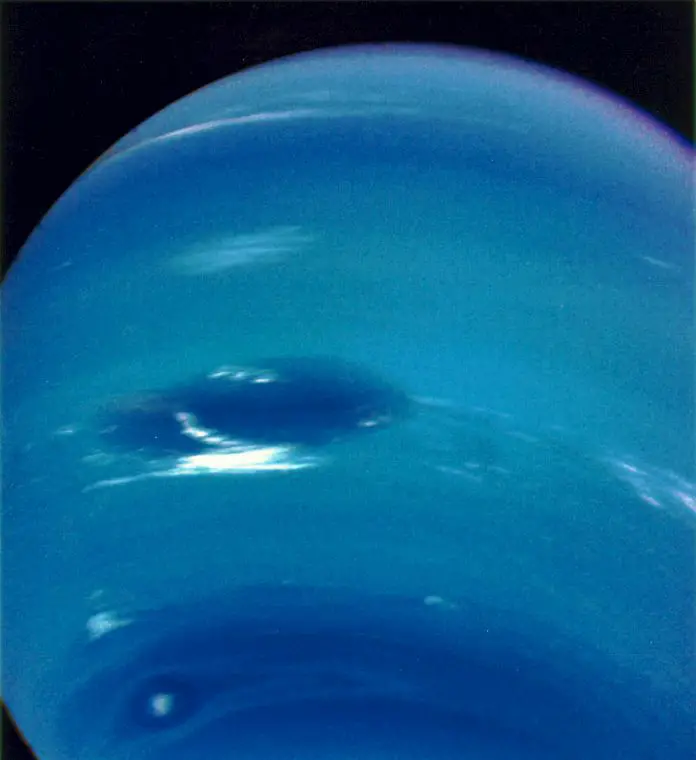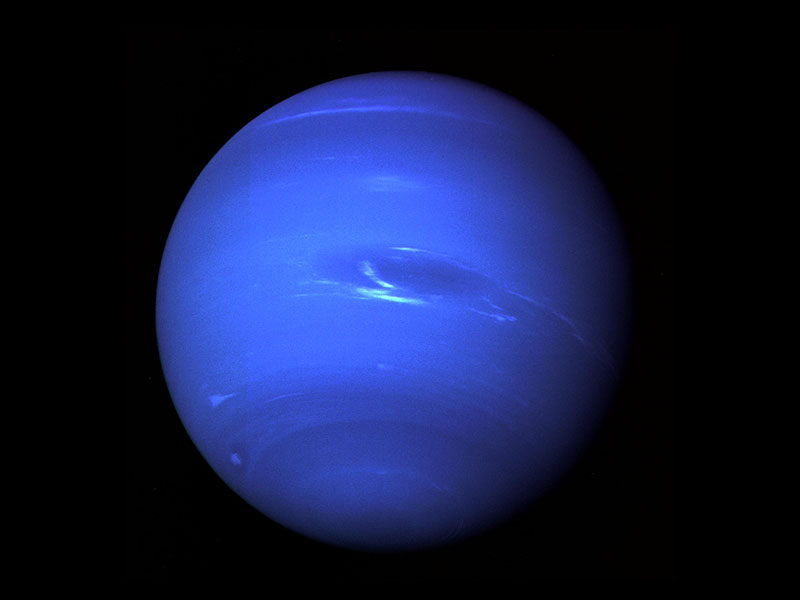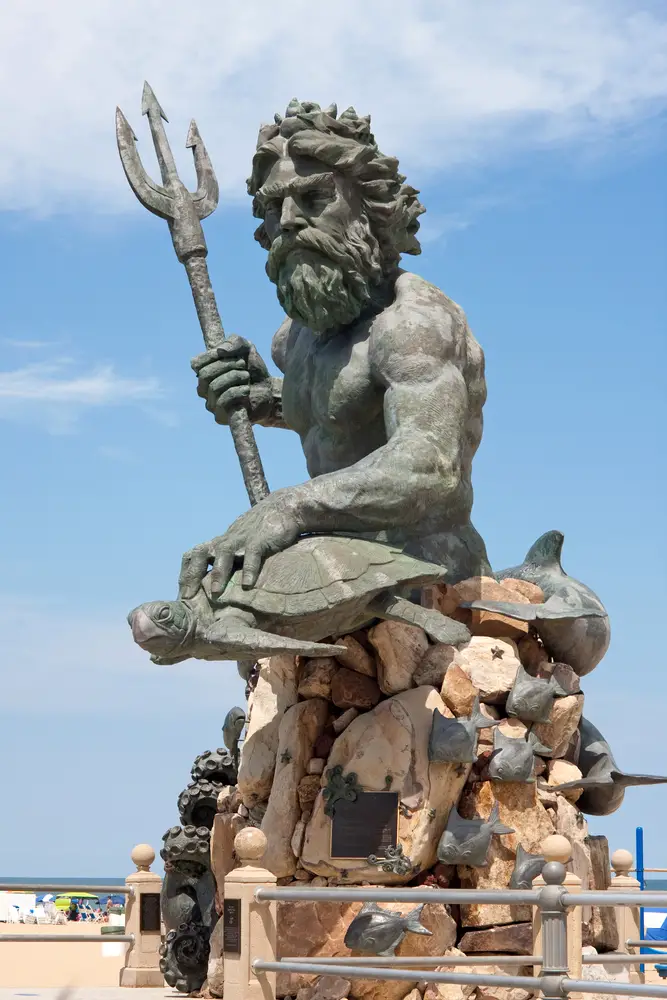Here is a collection of completely random facts about a fascinating blue planet very far from us that is named after a god of the sea. The planet Neptune.
The average cloud temperature on Neptune ranges from about -240 degrees to -330 degrees Fahrenheit (-151 to -201 degrees Celsius).
The winds on the planet can reach 1,200 miles per hour (1,770 kph), making it the planet with the fastest winds in the solar system. Go in-depth
The atmosphere on Neptune contains methane gas, but the percentage of methane in the atmosphere is only one to two percent. Methane absorbs longer wavelengths of sunlight in the red portion of the spectrum. This gives Neptune its blue color but doesn’t explain why Neptune is a brighter, more vivid blue than Uranus, which also has atmospheric methane. Scientists believe there is some unknown component in Neptune’s atmosphere making it such a bright blue.
Clouds on Neptune are made of methane ice crystals.

The only spacecraft to visit Neptune was Voyager 2 in 1989. It passed about 2,983 miles (4,800 kilometers) from the planet’s north pole.
Neptune has a short day but a long year. It rotates once every 16 hours but takes about 165 Earth years to orbit the Sun, which would be one Neptunian year.
Neptune is the only planet in our solar system that isn’t naked to the visible eye.
French mathematician and astronomer Urbain Le Verrier predicted the existence of the planet Neptune. He used only mathematics and astronomical observations of Uranus, an already known planet, to determine if there was another planet present. He presented his findings to the French Academy in 1846, just two days before John Couch Adams, an Englishman, who unbeknownst to Le Verrier had also calculated that Neptune existed, submitted his findings to the Royal Greenwich Observatory. But German Johann Galle is credited with the discovery of Neptune (based on Le Verrier’s prediction) after viewing it at the Berlin Observatory later in 1846.
Neptune has only completed one orbit since it was discovered in 1846. This took place in 2011.

Jupiter has the “Great Red Spot,” and Neptune has the “Great Dark Spot,” which was imaged during the Voyager 2 mission. The “Great Dark Spot” is believed to be a hole in the methane clouds that is the size of the earth. The “Great Dark Spot” disappeared when viewed later by the Hubble Telescope and reappeared in a different location in the planet’s northern hemisphere.
Neptune emits more than twice the energy that it receives from the Sun, indicating that the planet has a significant internal heat source. Neptune also has about the same temperature as Uranus, which is closer to the Sun.
The winds on the planet can reach 1,200 miles per hour (1,770 kph), making it the planet with the fastest winds in the solar system. Go in-depth on this fact below.
Neptune’s Incredibly Fast Winds
Every 248 Earth years, Pluto’s orbit brings it inside Neptune’s orbit for a 20-year period because of Pluto’s oval-shaped orbit. The most recent occurrence happened from 1979 to 1999 when Pluto was closer to the sun than Neptune.
Scientists believe Neptune may have an ocean of super-heated water under its cold, methane cloud layer. They also believe that the water doesn’t boil and evaporate away because of the intense high-pressure atmosphere of the planet that keeps the water on the surface.
Neptune was named after the Roman god of the sea since it was a bluish planet. The name was in keeping with the naming of planets after Roman mythological gods (with the exception of Earth). Neptune is the equivalent of the Greek god Poseidon.
Neptune has 14 moons, five rings, and four ring arcs, a collection of dust believed to have been clumped together because of the gravity of a nearby moon. All the moons are named after Greek sea gods and nymphs.
In Roman mythology, Neptune had two brothers — Jupiter, the god of the sky, and Pluto, the god of the dead — and his father was Saturn. Neptune carried a trident, a net, and rode in a carriage pulled by sea creatures or horses.
Sources: NASA(1), NASA(2), National Weather Service, Space.com, Britannica



